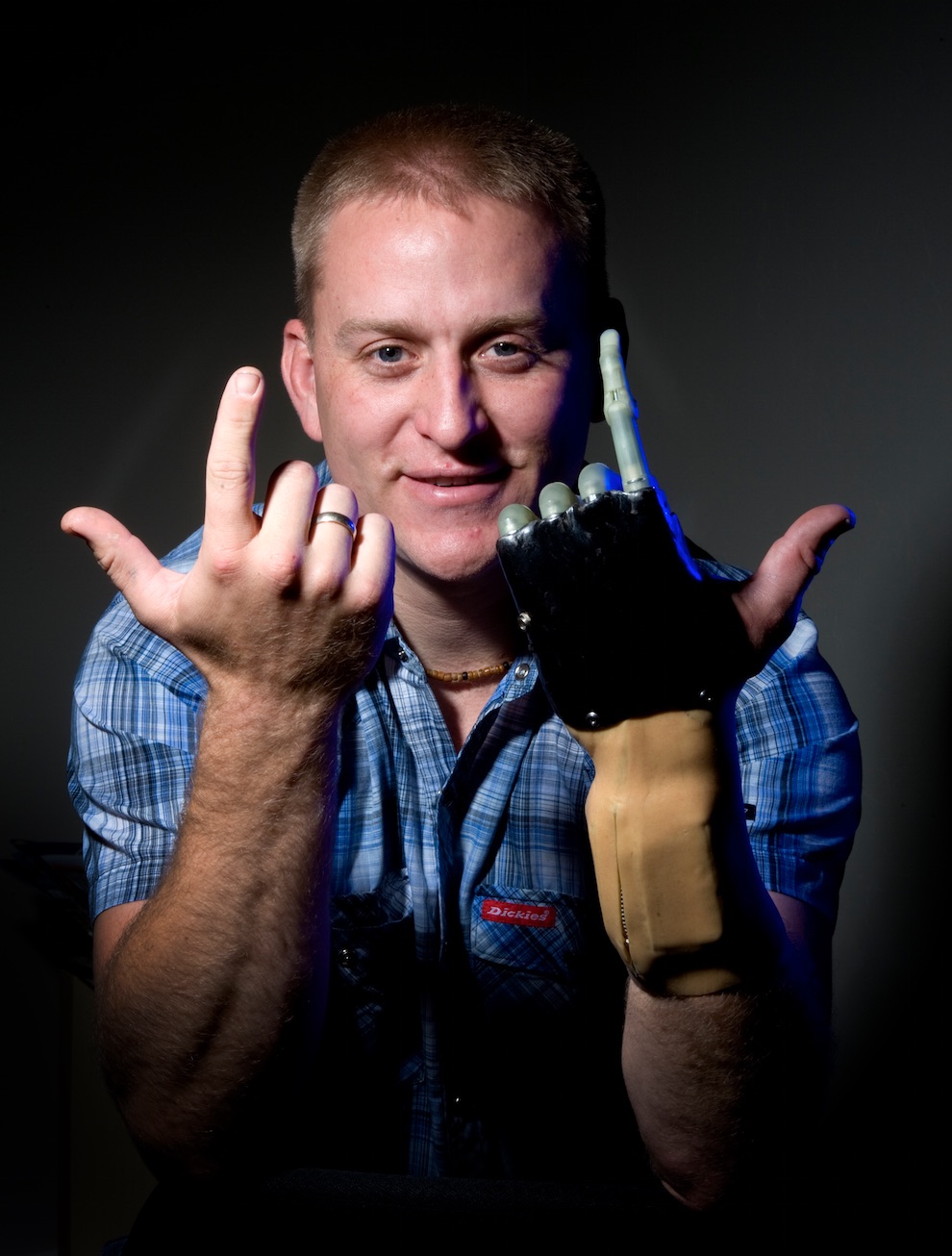Partial Hand

This includes any level of amputation within the hand
- This level of amputation can be difficult as there are few manufactured components available.
- Each level of partial hand amputation will disrupt the function of the hand in different ways. Prosthetic intervention is limited by space constraints. There is no single prosthesis or technique that is appropriate for all levels.
Finding a balance between comfort, function and cosmesis is key with this level of amputation. Since there are so many different functions that a hand does in a day it may require more than one partial hand prosthesis to fulfill patients goals
|
The way it works |
Depending on the level of amputation these prostheses can work in many different ways:
|
|
Prosthetic Treatment Pathway |
The patient is assessed by the Certified Prosthetist to determine what would be the most suitable interface, socket design, suspension method, functional components and cosmesis. The most appropriate prosthesis for a patient is based on a physical examination, history, and interview.
|
|
Continued Care |
The patient wears the prosthesis and contacts the Certified Prosthetist with any concerns, including:
The residual limb may change shape overtime, but the socket will not, this can cause skin irritation or lack of control in the prosthesis. |
|
Funding |
Alberta Aids to Daily Living The Alberta Aids to Daily Living (AADL) program helps Albertans with a long-term disability, chronic illness or terminal illness to maintain their independence at home, in lodges or group homes by providing financial assistance to buy medical equipment and supplies. An assessment by a health care professional (Orthotist or Prosthetist) determines the equipment and supplies that an Albertan can receive through this program. Albertans pay 25% of the benefit cost to a maximum of $500 per individual or family per year.Seniors, low-income Albertans, and those receiving income assistance are exempt from paying the cost-sharing portion. For some benefits, clients may choose an upgraded item and must pay the additional cost of this item. These additional costs are not included in the $500 cost-share maximum. You may be eligible for benefits through AADL if you:
Visit Alberta Aids to Daily Living website for more details regarding the AADL program including forms can be found › Workers’ Compensation Board (WCB) - Alberta Every hour, Albertans are injured on the job. The Workers’ Compensation Board - Alberta is a not-for profit organization that helps injured workers return to work as quickly and as safely as possible. I some cases foot orthotics and various bracing (i.e. knee, back, etc.) is required to return to work. In most cases our members will work with the prescription you received from a physician and determine what to recommend. Then your WCB case worker would be contacted to secure approval for the item you require. Most items requested are established within the contract and fee guide that is negotiated between membership and WCB – Alberta. In some cases a special request is required for items not contained within the fee guide. WCB would be direct billed for treatments provided on your behalf Visit WCB - Alberta’s website for more details › Non-Insured Health Benefits (NIHB) Program Health Canada's Non-Insured Health Benefits (NIHB) Program provides a limited range of medically necessary health-related goods and services to eligible registered First Nations and recognized Inuit, when these goods and services are not already provided through private insurance plans, provincial or territorial health and social programs, or other publicly funded programs. NIHB Program benefits include a specified range of medical supplies and equipment (i.e. orthotics, custom footwear, prosthetics); prescription drugs and over-the-counter medications; dental and vision care; short-term crisis mental health counseling; and transportation to access medically required health services that are not available on the reserve or in the community of residence. The Program also funds provincial health premiums for eligible Clients in British Columbia. The Provider Guide for Medical Supplies and Equipment (MS&E) Benefits explains the terms and conditions, the policies, and the benefits under which the NIHB Program will reimburse medical supplies and equipment provided to eligible Clients. As policies and procedures evolve, the guide is updated accordingly and providers are advised of these changes through the Program's newsletters and bulletins. NIHB would be direct billed for treatments provided on your behalf Vist the NIHB website to learn more about the program › Veterans Affairs Canada (DVA) Provides coverage for prostheses, orthoses, and other related accessories. Repairs to equipment are obtained under this program. Like most paying agents our members require prior approval before providing any items. Pre authorization paperwork will need to be completed and submitted to pursue any funding available. DVA would be direct billed for treatments provided on your behalf. Examples of benefits covered:
Visit the Veterans Affairs website to learn more › Private Insurance Funding available from private insurance companies varies a great deal and how our members interact with third party insurers would also vary. Please speak directly with any of our members in regards to any specific third party insurance related questions you may have. |

